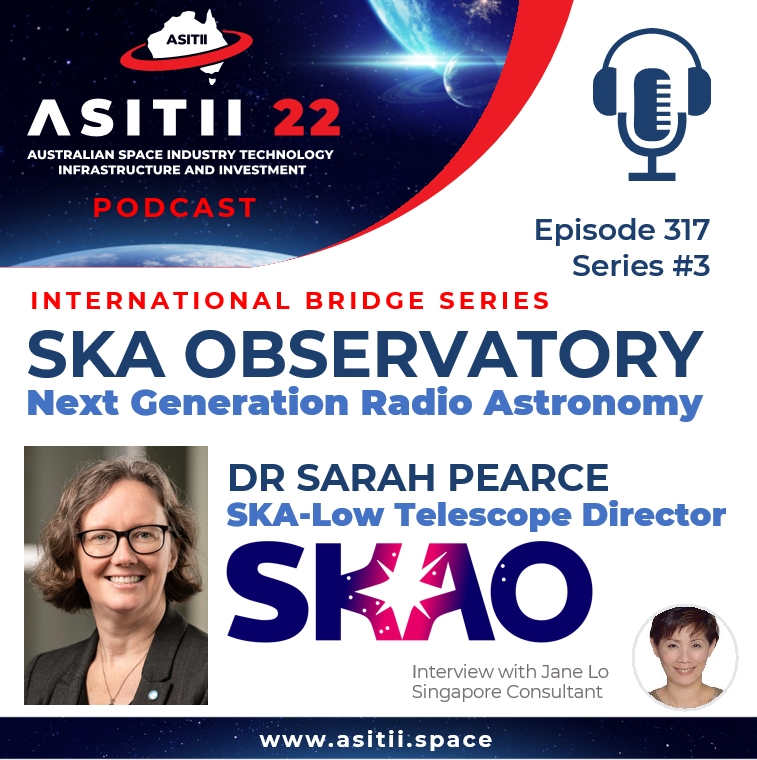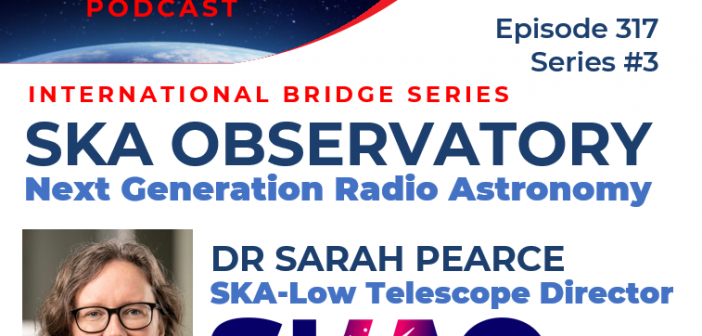
Dr. Sarah Pearce is Director of the SKA-Low Telescope, soon to be built in Western Australia as part of the $2bn international SKA Observatory. Sarah worked at Australia’s national science agency, CSIRO, for 10 years in the fields of space and astronomy, and spent six months in early 2021 as CSIRO’s Acting Chief Scientist.
Her previous roles included senior science advisor in the UK Parliament and project manager of GridPP, the UK’s program delivering computing for particle physics. In 2020, Dr. Pearce was named Telstra NSW Business Woman of the Year and Executive of the Year at the Australian Space Awards. She is a strong advocate for diversity in science and technology.
Sarah holds a PhD in X-ray astronomy from the University of Leicester and an undergraduate degree in Physics from the University of Oxford (Worcester College).
In this podcast, Dr Pearce shares the latest development of the SKA (Square Kilometre Array) Observatory – an international ‘mega science’ radio-astronomy project. The SKAO Is an intergovernmental organisation – the second-ever in astronomy – that was officially launched in July 2021.
She highlights that SKA will be the world’s largest radio telescope facility of its kind, underpinned by the latest technologies that can help address the exciting cutting-edge challenges in astronomy, including our understanding of the cosmic dawn – the time when the first stars and galaxies in the Universe were formed.
She elaborates on the international partnerships and collaborative efforts in the project. It involves 16 countries as well as engineering consortiums across the world, who are coming together to build the two SKA telescopes, being built in remote regions of South Africa and Australia.
She explains how the existing precursor radio telescopes in Australia – the Australian SKA Pathfinder (ASKAP) with 36 antennas, and the Murchison Widefield Array (MWA) in Western Australia with more than 4,000 antennas – have contributed to planning for the SKA-Low telescope, the “low” frequency antenna array operating in the 50-350 Mhz band.
Comprising up to 130,000 antennas spreading across 65km of desert, Dr Pearce explains the telescope will be more sensitive, and able to capture images at higher resolution and faster than ever before.
Dr Pearce discusses the significance of the selection of the sites in Australia and South Africa – that the Southern hemisphere offers the best views of the Milky Way Galaxy and the remote locations of the telescopes locations ensure minimal radio interference (or “radio quiet”) at these sites. In fact, due to the amount of radio signals generated by human activities, sites visitations are very restricted.
With the data captured by the hundreds of thousands of SKA antennas expected to reach 8 terabytes per second, equivalent to more than 100,000 the average speed of home broadband, Dr Pearce points out how the “big data” aspect is also a challenge, in addition to the challenges involve in building the telescopes.
Dr Pearce rounds off the podcast by paying respects to the Wajarri Yamaji people, the traditional owners of the land on which the SKA-Low telescope will be built.
Recorded 16th March 2022 1.30pm Australia Western Time Zone/ Singapore Time





